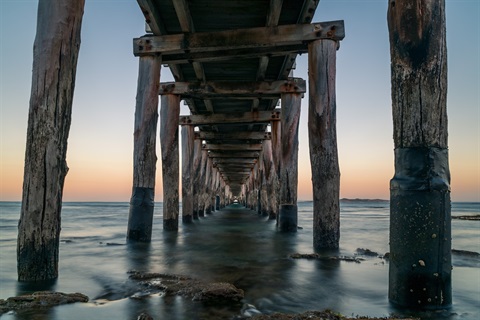Borough publishes draft climate emergency plan
Published on 29 March 2021

The Borough of Queenscliffe has published the draft Climate Emergency Response Plan it has developed in partnership with the community, and is asking locals to read the plan and share their thoughts.
Since declaring a climate emergency in December 2019, Council has worked closely with the community on a plan to prevent and prepare for climate change in the Borough. A randomly-selected community panel created the draft plan, which commits to three key targets, including becoming a zero-carbon community by 2031. These targets are supported by 54 individual action items across 8 pillars, including opportunities for community members to take part in delivering the plan.
Queenscliffe Mayor Ross Ebbels said the ambitious plan reflects the need many consultation participants saw for a rapid, local response. “Declaring a climate emergency showed that our community recognises the importance of acting quickly to prevent and prepare for climate change,” said Cr Ebbels. “This plan now puts that recognition into practice with a clear path to making the Borough a zero-carbon community.”
Community input was central to the plan’s development, involving multiple rounds of consultation and workshops to develop the draft. Queenscliffe Climate Action Group founder Kitty Walker said that the group worked closely with Council to develop the plan. “This draft plan has been developed by the community for the community and will leave a lasting legacy for future generations," said Ms Walker. "We drew from successful climate emergency responses that are being implemented across Australia and internationally to develop a plan that will help us to protect people, property and our natural environment from the increasing impacts of climate change. At the same time, working together to reduce emissions will improve our health and wellbeing, our quality of life and our economic prosperity."
Community members can read the plan on Council’s website. The full report also contains detailed information on the current emissions profile of our community, how each target will be achieved, and how the plan was developed.
Residents can also learn more about the plan during a live webinar Q&A on 6 April with officers and community panel participants. More information about how to take part, as well as how to provide feedback on the plan, is also available on Council’s website.